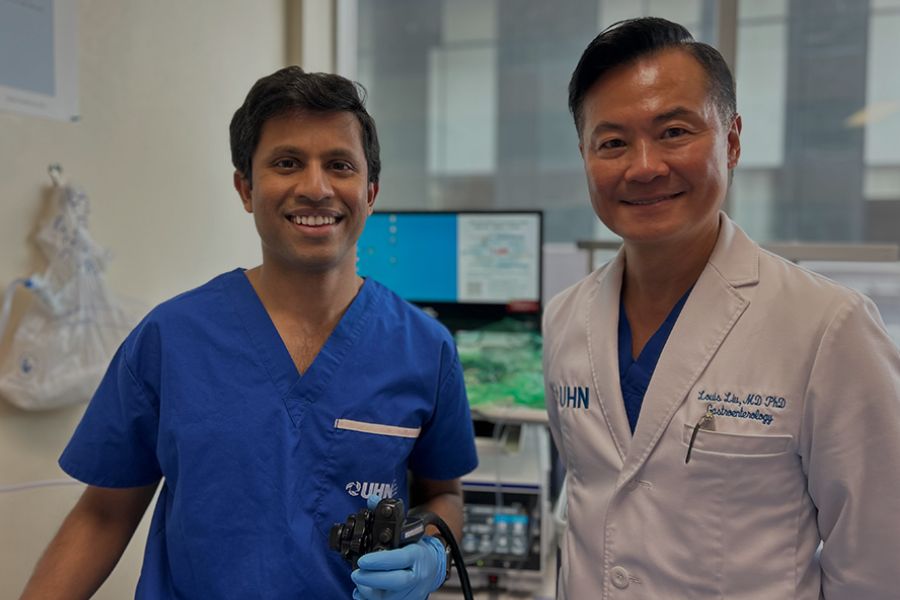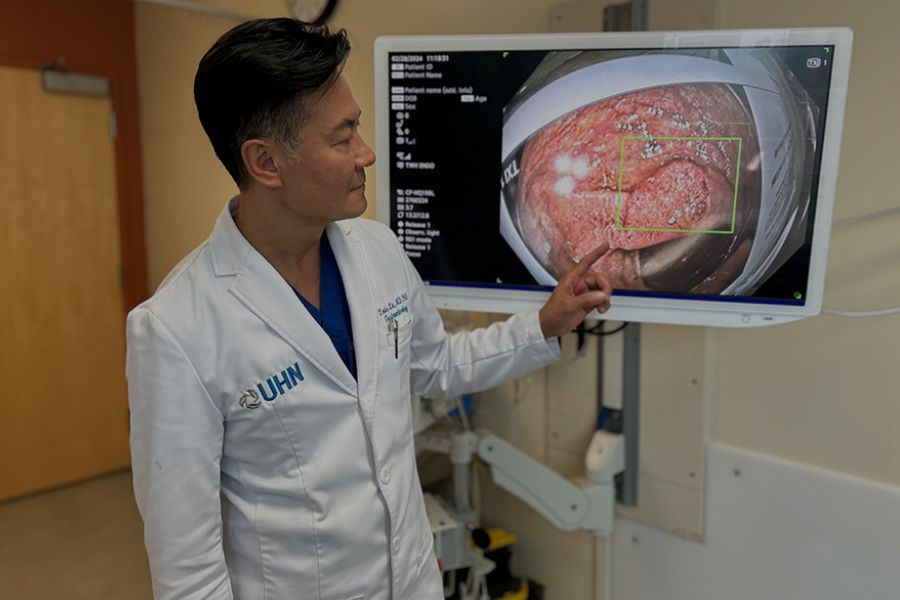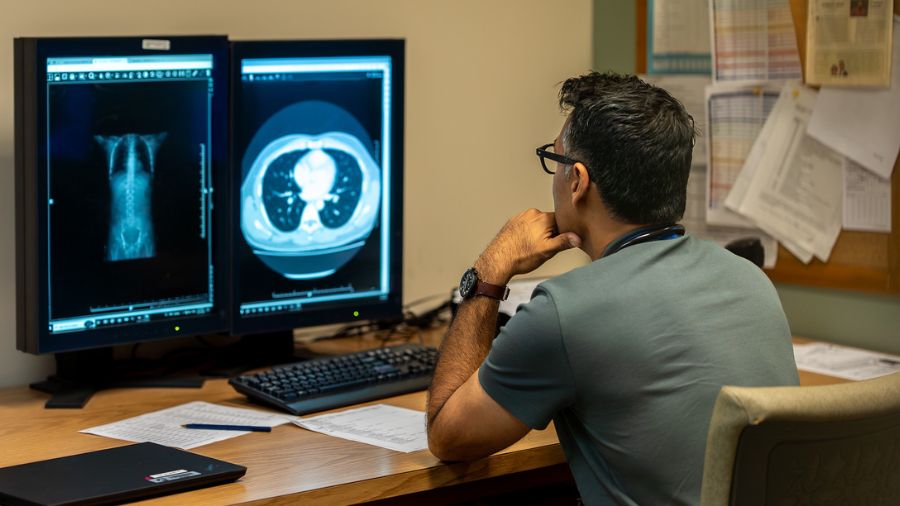
By Shauna Mazenes
For Dr. Thurarshen Jeyalingam, it’s like he’s been given a second set of eyes.
About a year ago, UHN’s Driscoll Family Digestive Health Centre at Toronto Western Hospital became one of the first centres in Ontario to acquire an artificial intelligence (AI) system for use in colonoscopies. This not only improves the speed of colorectal cancer screening but can save lives by helping identify hard-to-find pre-cancerous polyps.
“The colon is one of the only areas of the body where we can insert a camera and prevent nearly 100 per cent of cancer cases before they happen, so we want to make sure every colonoscopy counts,” says Dr. Jeyalingam, a gastroenterologist at the hospital.
“Artificial intelligence is one of the tools that helps us do that.”
All colon cancers start as a polyp. If pre-cancerous polyps are found during a colonoscopy, they can be removed through a simple procedure called a polypectomy.
However, up to eight per cent of colon cancer patients are still diagnosed after their colonoscopy, something known as “post-colonoscopy colon cancer.”
Doctors say AI is addressing this issue by helping them detect potentially cancerous polyps that may have been overlooked by the human eye due to their shape and size.
Here’s how it works: during a colonoscopy, AI identifies and highlights possible polyps in a bright green box on-screen. The endoscopists are then alerted to take a second look and determine if the spot may be pre-cancerous, or at the very least, know to monitor the patient moving forward.
Dr. Louis Liu, Head of Gastroenterology and Hepatology at UHN and the inaugural holder of the Driscoll Family Chair in Digestive Health, adds that polyp detection rates may vary based on time of day. This suggests human fatigue may also play a role in how many are caught or missed during the procedure.
“We’re human. We’re not perfect, and sometimes we need help,” says Dr. Liu.

While most endoscopists think they’re very proficient, Dr. Liu says AI is a humbling and necessary tool that can not only save time, but lives.
“Anything that can help us make a difference in patients’ lives is worth it,” he says.
This March, Colorectal Cancer Awareness Month, marks one year since UHN began performing AI-assisted colonoscopies. Among the approximate 240 colonoscopies a month at the Driscoll Family Digestive Health Centre at Toronto Western Hospital, about 160 have the help of AI.
The pair say while AI helps them do their job, they help AI, too.
Described as a “symbiotic” process, the system relies on the endoscopists to provide the visual input of the inner lining of the colon in order to know exactly what it’s looking for during the procedure. This includes sessile serrated lesions – the pre-cancerous polyp that can be flat, subtle and more likely to get missed.
Most patients are told not to come back for 10 years after a clear colonoscopy. For those who may have had a subtle polyp go unnoticed, that could be enough time to develop into a cancer diagnosis.
“Most cases of colon cancer are entirely preventable,” Dr. Jeyalingam says.
“At the end of the day, it’s not about us. It’s about the patient and doing whatever we can to make their care the best it can possibly be.”
Thankfully, AI is here to help UHN do that.
This new AI system was acquired with the generous support from donors to the Driscoll Family Digestive Health Centre at UHN.
As for Drs. Liu and Jeyalingam, they will continue to use AI clinically, and as an educational tool to train the next generation of endoscopists. Their future research will focus on how clinicians interact with AI and the best ways to use it to better patient care.

No one ever changed the world on their own but when the bright minds at UHN work together with donors we can redefine the world of health care together.


